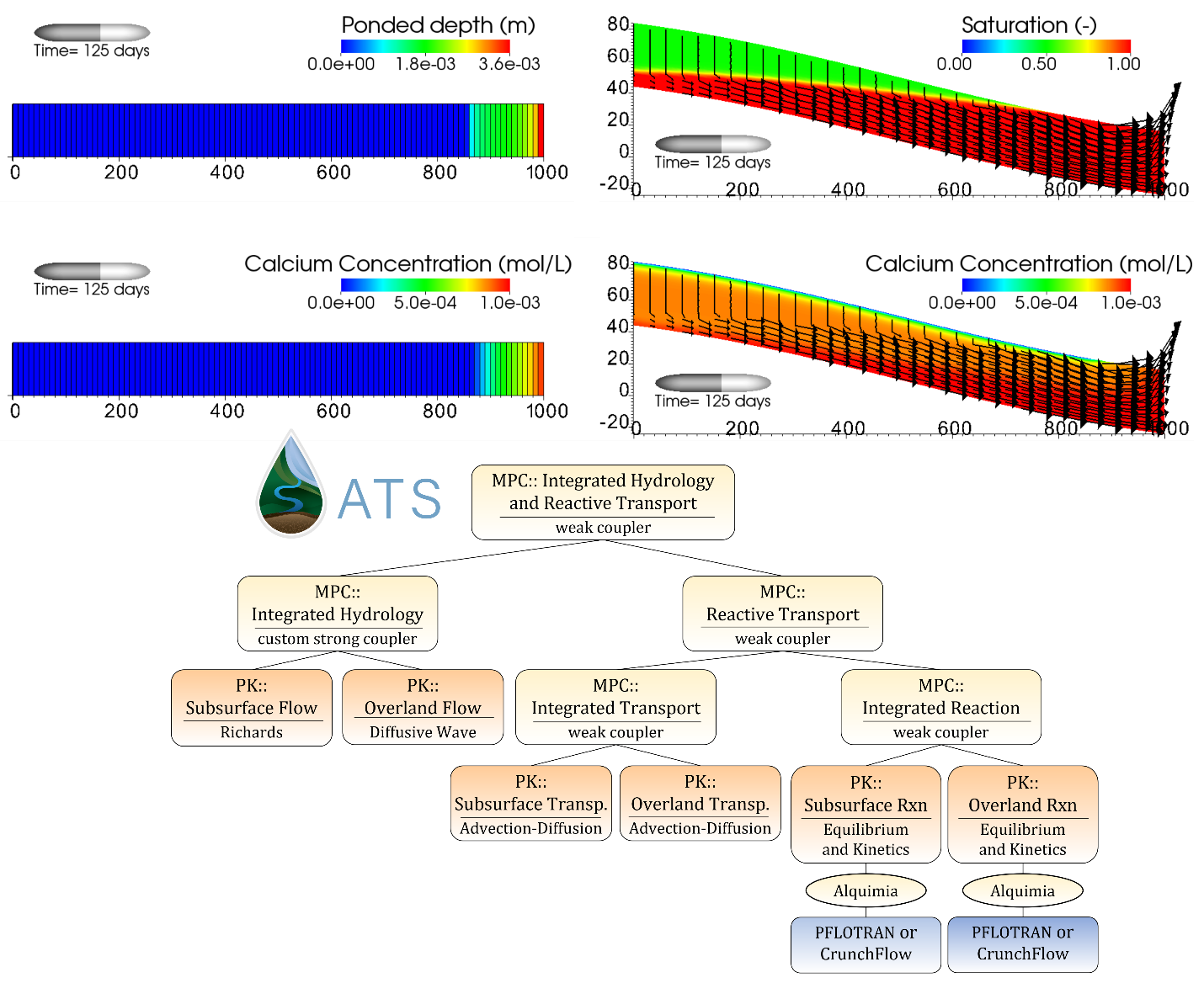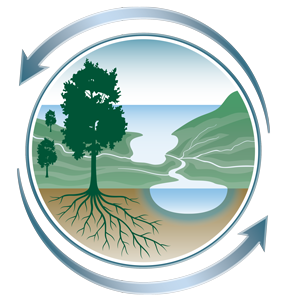August 09, 2022
Multi-Component Reactive Transport Model Quantifies Hydrological and Geochemical Exports from Watersheds
Interoperable software enables reactive transport modeling at watershed scales.

Model outputs showing water content (ponded depth in the surface and saturation in the subsurface) and calcium concentrations in a demonstration hillslope simulation, and a diagram of the hierarchical code structure and how the processes are coupled.
[Reprinted under a Creative Commons Attribution-NonCommercial-NoDerivatives 4.0 International License (CC BY-NC-ND 4.0) from Molins, S., et al. “A Multicomponent Reactive Transport Model for Integrated Surface-Subsurface Hydrology Problems.” Water Resources Research 58 (8), (2022). DOI:10.1029/2022WR032074.]
The Science
To evaluate the natural processes affecting freshwater availability and quality in watersheds, a multi-institutional team of scientists developed a mathematical approach that describes how chemical solutes move and transform in water as they flow over the Earth’s surface (such as in streams or in runoff) and in subsurface soil as groundwater. They implemented their mathematical approach in the Advanced Terrestrial Simulator (ATS) code, which combines existing pieces of software, expedites development, and ensures code quality.
The Impact
Human activity relies on abundant and clean freshwater resources. Therefore, accurately predicting water and solute fluxes from watersheds is critical. Researchers developed a novel mathematical approach for studying water quantity and quality, minimizes assumptions and ensures accurate accounting for all chemical solutes as they move along and between various surface and subsurface pathways. Moreover, this approach makes it possible to apply the model in ways that not only represent entire watersheds but also capture watershed subsystems, such as floodplains or hillslopes. This capability makes the approach uniquely flexible and useful for predictive studies.
Summary
Despite the widespread use of integrated hydrology models in a variety of applications, consideration of solute transport and geochemical reactions is still not common. Now, a multi-institutional team has implemented solute transport and geochemical reactions into the Advanced Terrestrial Simulator (ATS), a software code that provides a flexible multi-physics framework that facilitates their coupling. This coupling uses a novel algorithm to calculate exchange fluxes across the surface-subsurface interface, and a point-by-point solution of the geochemical problem. Geochemical capabilities were added using well-established external codes through a generic interface instead of a custom interface for each code. These new capabilities were demonstrated by simulating tracer transport in a soil column and reactive transport in a hillslope.
Principal Investigator
Sergi Molins
Lawrence Berkeley National Laboratory
[email protected]
Program Manager
Paul Bayer
U.S. Department of Energy, Biological and Environmental Research (SC-33)
Environmental System Science
[email protected]
Funding
This work was supported by the Interoperable Design of Extreme-scale Application Software (IDEAS) Watersheds project, which is funded by the Biological and Environmental Research (BER) Program within the U.S. Department of Energy’s (DOE) Office of Science under Award no. DE-AC02-05CH11231.
References
Molins, S., et al. "A Multicomponent Reactive Transport Model for Integrated Surface-Subsurface Hydrology Problems." Water Resources Research 58 (8), (2022). https://doi.org/10.1029/2022WR032074.

